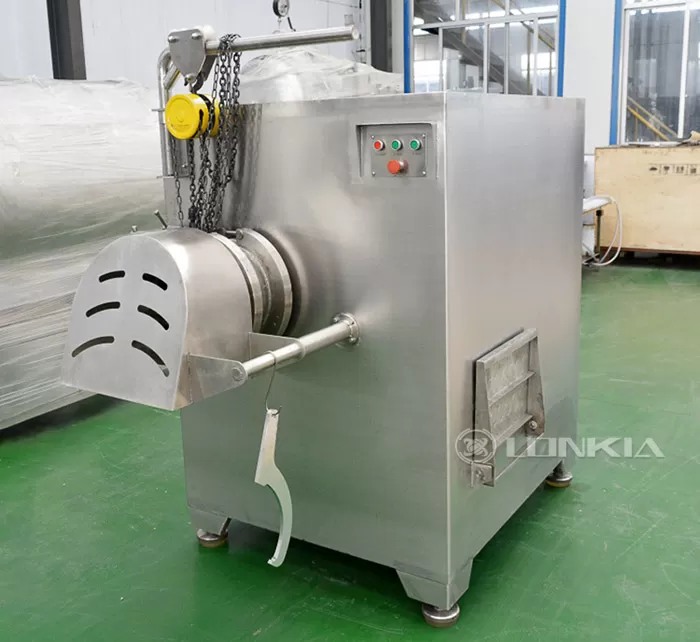In the sausage production industry, maintaining clean and well-functioning equipment is essential for ensuring food safety, product quality, and operational efficiency. Improper cleaning can lead to bacterial contamination, product spoilage, equipment breakdowns, and regulatory violations. To prevent these issues, businesses must implement effective cleaning and maintenance procedures for their grinders, mixers, stuffers, cutters, cookers, and packaging machines.
This article outlines the best cleaning and maintenance practices to keep sausage production equipment running smoothly while maintaining the highest hygiene standards.
1. Establish a Regular Cleaning Schedule
Why It’s Important:
Sausage production involves raw meat, fats, seasonings, and casings, all of which can leave residues that promote bacterial growth and equipment wear. A daily cleaning routine is essential to meet food safety regulations (HACCP, FDA, and GMP standards) and prevent contamination.
Best Practices:
✅ Daily Cleaning: Clean all surfaces and components that come into contact with meat after each production shift.
✅ Deep Cleaning (Weekly/Monthly): Fully disassemble equipment for a more thorough sanitation process.
✅ Sanitation Log: Maintain records of cleaning schedules to comply with food safety audits.
2. Use Proper Cleaning Agents and Sanitizers
Why It’s Important:
Using the wrong cleaning chemicals can damage equipment or leave harmful residues on surfaces. Proper detergents and sanitizers eliminate fat, protein deposits, and bacteria without harming stainless steel components.
Best Practices:
✅ Use alkaline detergents for breaking down fats and proteins.
✅ Apply acidic cleaners periodically to remove mineral buildup.
✅ Use food-grade sanitizers (e.g., quaternary ammonium, peracetic acid, chlorine-based solutions).
✅ Rinse thoroughly after applying chemicals to prevent residue contamination.

3. Implement Proper Cleaning Procedures for Each Equipment Type
Different types of sausage production equipment require specific cleaning methods.
a. Meat Grinders & Mixers
Disassemble parts such as blades, augers, plates, and hoppers.
Soak in warm alkaline detergent to dissolve meat residues.
Scrub with non-abrasive brushes to prevent metal damage.
Rinse and sanitize before reassembling.
b. Sausage Stuffers & Fillers
Flush all pipes and tubes with hot water and detergent.
Pay extra attention to seals, valves, and stuffing horns, as these areas trap meat particles.
Lubricate moving parts with food-grade lubricants after cleaning.
c. Cutters & Choppers
Remove all blades and attachments before cleaning.
Use a soft-bristle brush to clean around blade edges.
Sanitize thoroughly to eliminate bacterial contamination.
d. Cookers & Smokehouses
Clean steam lines, trays, and racks regularly.
Remove grease buildup from chamber walls.
Ensure proper ventilation cleaning to prevent smoke residue accumulation.
e. Packaging Machines
Wipe down sealing bars, conveyor belts, and cutting blades after each use.
Check for food residue buildup that could interfere with packaging seals.
Lubricate rollers and moving parts to prevent wear and tear.
4. Prevent Cross-Contamination During Cleaning
Why It’s Important:
If cleaning tools or equipment are not properly sanitized, bacteria can spread across different surfaces and compromise food safety.
Best Practices:
✅ Use color-coded cleaning tools for different zones (e.g., raw meat areas vs. cooked product zones).
✅ Train staff on hygienic handling practices to avoid cross-contamination.
✅ Store cleaned parts in a dry, contamination-free area.
5. Regularly Inspect and Maintain Equipment
Why It’s Important:
Routine equipment inspections help prevent unexpected breakdowns, costly repairs, and production delays. Catching small issues early extends equipment lifespan and improves performance.
Best Practices:
✅ Check for loose screws, worn-out seals, and damaged blades before each shift.
✅ Inspect belts, gears, and motor components for signs of wear.
✅ Replace gaskets and rubber seals regularly to prevent leaks.
✅ Keep a maintenance log to track repairs and servicing.
6. Train Employees on Proper Cleaning and Maintenance
Why It’s Important:
Employees who understand proper cleaning and maintenance procedures can prevent food safety risks and extend the life of equipment.
Best Practices:
✅ Conduct regular training sessions on proper sanitation techniques.
✅ Provide step-by-step cleaning guides and checklists.
✅ Train staff to identify early signs of equipment malfunction.
7. Invest in Automated Cleaning Solutions
Why It’s Important:
For high-volume sausage production, automated cleaning systems reduce labor costs and improve cleaning efficiency.
Best Practices:
✅ Consider CIP (Clean-in-Place) systems for automated cleaning of pipes and enclosed machinery.
✅ Use ultrasonic cleaning baths for small, intricate machine parts.
✅ Upgrade to self-cleaning conveyor belts and sanitizing sprayers for faster production line hygiene.
8. Ensure Compliance with Food Safety Regulations
Why It’s Important:
Failure to meet HACCP, FDA, USDA, and GMP food safety standards can result in fines, product recalls, or business shutdowns.
Best Practices:
✅ Conduct regular audits to ensure compliance with hygiene standards.
✅ Keep detailed sanitation logs and maintenance records for inspections.
✅ Implement a food safety management system (FSMS) to monitor and improve cleaning procedures.
Conclusion: The Key to Efficient and Safe Sausage Production
Maintaining clean and well-maintained sausage production equipment is critical for ensuring food safety, efficiency, and compliance. By implementing regular cleaning schedules, using proper sanitation methods, and investing in employee training, businesses can:
✅ Prevent bacterial contamination and ensure product safety.
✅ Reduce downtime and repair costs by maintaining equipment properly.
✅ Meet regulatory standards and avoid fines or shutdowns.
✅ Increase production efficiency by keeping machines in optimal condition.
At LONKIA Machinery, we provide high-quality sausage production equipment designed for easy cleaning, durability, and compliance with food safety regulations. Contact us today to learn more about sanitary equipment solutions for your production line!
